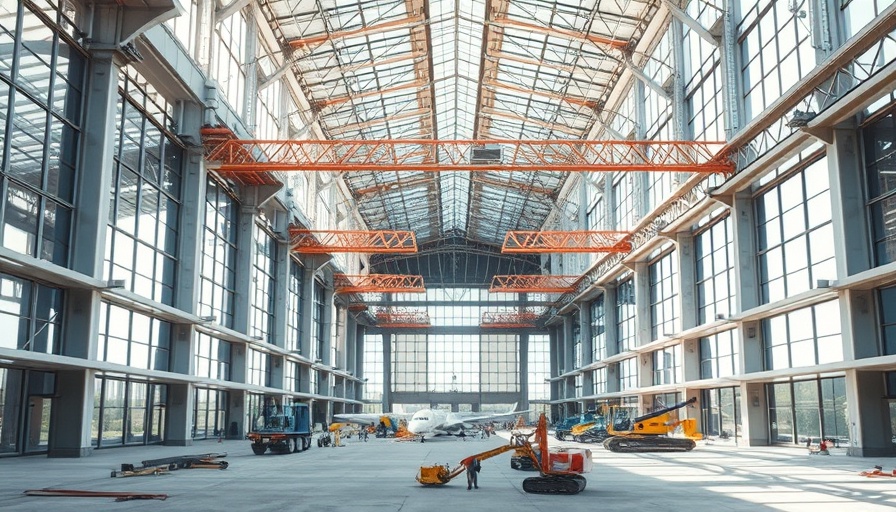
The Future of JFK Airport: A Look Inside the New Terminal 1
John F. Kennedy International Airport (JFK) is entering an exciting new phase with the construction of its new $9.5 billion Terminal 1, anticipated to be a hub for international travel, set to open in mid-2026. This ambitious project marks a significant transformation for one of the busiest airports in the United States, aiming to enhance the experience of millions of travelers.
Why the New Terminal Matters
This project reflects a critical need for updated infrastructure that aligns with the ever-growing demand for international flights. The existing terminal, which opened in 1998, has been unable to effectively accommodate the influx of travelers from around the globe. The new Terminal 1, almost twice the size of the combined new LaGuardia terminals, is designed from the ground up to prioritize international customers, as emphasized by Jennifer Aument, CEO of New Terminal One.
A Sneak Peek into the Designs and Features
As of early July, the terminal was already weathertight, showcasing visible signs of progress, including winding baggage conveyor belts and designated areas for ticket counters of several international carriers such as Turkish Airlines and Air New Zealand. This terminal is more than just an architectural endeavor; it is about creating a seamless travel experience. The layout emphasizes efficiency and accessibility, key factors for travelers who often encounter obstacles in airports.
Environmental Considerations in Modern Air Travel
One of the striking features of the new Terminal 1 is its commitment to sustainability. Building a terminal that utilizes eco-friendly materials and employs energy-saving technologies addresses the pressing issue of environmental impact in the aviation industry. As communities and travelers alike become more aware of carbon footprints, JFK's focus on sustainable design reflects broader trends in travel.
Broader Implications for NYC's Economy
Investment in infrastructure, particularly in dynamic urban centers like New York City, is crucial for economic development. The new terminal is expected to create jobs and stimulate related industries, boosting the local economy. This connects to a larger narrative where infrastructure projects not only enhance travel experiences but also foster community growth.
What This Means for Travelers
The excitement surrounding the new terminal is palpable, but what does it specifically mean for travelers? For those journeying internationally, the prospect of state-of-the-art facilities, improved efficiency in processing through customs and better amenities could redefine the travel experience. More importantly, these advancements have the potential to reduce stress and wait times, making travel more pleasant.
Current Airlines Investing in the Future
Major airlines are already expressing interest in operating from the new Terminal 1, signaling confidence in the project and its ability to connect travelers with global destinations. This focus on international flights reflects a keen understanding of market needs, as airlines aim to cater to an increasingly interconnected world.
Future Predictions: The Design as a Model for Airports Worldwide
As Terminal 1 nears completion, it stands poised to serve as a model for airports across the globe. With a focus on passenger experience and sustainability, JFK's new project could set a standard for future terminals. Airports are often seen as the face of a city—how they evolve can significantly influence visitors' perceptions of a location.
The New Normal: Engaging with Modern Amenities
Anticipating the opening of the terminal allows us to reflect on how travel has changed over the years. Not just about flights, travelers are looking for holistic experiences that provide convenience and comfort. The integration of technology and amenities—such as lounge access, shopping, and efficient dining options—will be tested as the terminal begins operations.
The new Terminal 1 at JFK is more than an architectural venture; it is a symbol of progress for airlines and travelers alike. As we move closer to its opening, travelers can look forward to a welcoming, efficient, and modern international hub that enhances the flying experience while keeping environmental considerations at the forefront.
 Add Row
Add Row  Add
Add 




Write A Comment